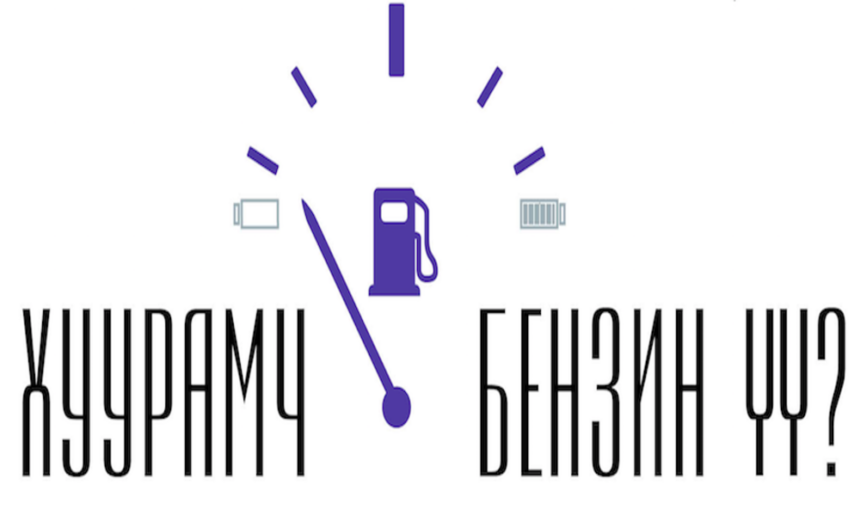Mongolia had squandered one fifth of its export profit on petroleum products in 2017, as usual. 94.5 percent of the petroleum products have been imported from Russia, 3.4 percent from South Korea, 1.8 percent from China and 0.3 percent from other countries. Out of the 1.5 million tonnes of petroleum products used; 56 percent is diesel, 24 percent is 90+ octane gas, 4 percent is 90- octane gas, 2 percent is aviation fuel and the remaining is oil, mazut, and bitumen.
In the past 10 years since 2007, Mongolia’s petroleum product consumption has increased 2.3 times; where diesel had increased 2.6 times, aviation fuel 1.5 times, 90+ octane gas 3.3 times and the rest 10 times, yet 90- octane gas was reduced by 60 percent. Diesel consumption has skyrocketed due to the mining industry, whereas the change in car choice has resulted in higher octane gas.
Because we purchase petroleum products at the global market price, domestic retail prices fluctuate accordingly. In order to stabilize petrol retail prices, the government has been adjusting fuel taxes since 2018. When the market price is high, taxes go down, even to 0 percent, and goes back up when the price goes down.
Since 1994, petroleum and fuel products have been subject to VAT. The original goal of the tax was to allocate income petroleum products to the state budget, not to regulate prices. The tax money was theoretically supposed to be spent on social benefits and improving the quality of public services through the state budget.
If we look at the attempt to regulate fuel prices by VAT over the past 10 years, not only did it fail to keep the price constant, but also it encouraged the government to become over-involved in the economy and caused a loss in tax revenue, encapsulated by the proverb penny-wise and pound-foolish.
What does fake petrol mean?
Differentiated tariffs are imposed for imported petroleum and diesel per tonne, based on the octane amount. As the import price fluctuated, fuel taxes have followed up over the past decade, and the Government has approved many new resolutions on the fuel tax percentage.
In addition, the previous Government attempted to carry out the so called “price stabilization program” which ended up as “mission impossible”, and had lent money to fuel importers pegged in foreign currency. As a result of the program, an abnormal standard was set, importers kept the prices as they were, even when the market prices were low, but they then raised the price if the market price went up.
Another “merit” was to encourage businesses that import raw materials such as Naphtha, Alkylate, MTBE that are VAT exempt and produce end-products (petrol and diesel) to sell at a cheaper price. Like any business in a free market, all importers are sought the same way for profit and made way for a new competition.
Almost all importers are selling petrol made in Mongolia through their own gas stations. Certain large companies are doing research on building production facilities, finding a reliable supplier and producing petroleum.
At the same time, the media is raging with news, with headlines such as “Petrol made in Mongolia that is so counterfeit it is foul, quickly burning, evaporating, and harmful for the engine is being sold”. Claims circulate such as fake petrol is being sold at 400-500 gas stations and even large mining corporations, such as Oyu tolgoi, Tavan tolgoi, MAK, Usukh Zoos and Khishig-Arvin are purchasing from them. Are these companies really using fake fuel and gas? Yet, they test their expensive machinery in the laboratories. So far, none of them have reported any issues due to fake petrol.
A senior investigator at the General Agency for Specialized Investigation, T. Munkhbold, has investigated these fuel and gas allegations and never found anything, based on laboratory results. “In terms of the term, fake petrol is incorrect”, he stated in an interview.
Nevertheless, the Ministry of Mining and Heavy Industry has requested the parliament to only include petrol ingredients to the fuel tax law.
How to manage petrol prices?
Petrol price depends on market price, as well as MNT exchange rates. Therefore, it is suitable to set the fuel tax percentage in accordance with the changes in exchange rates. For example, when 1 USD equals 2500 MNT, fuel tax can be set to 250 thousand MNT per tonne, and if 1 USD equals 3000 MNT, a 20 percent increase, fuel tax can go down by 20 percent to 200 thousand MNT per tonne. It would make planning easier and more transparent for both sides. Prices will go down if MNT rates go up.
Alternatively, we can set a specific tariff. Because if the price is set as the market price, it is beneficial to customers in the long run as it is predictable and decreases the expectation of price inflation. Only the real market price will give accurate information and when customers know what the price consists of, they can plan their actions in the short term and in the long term. It can be clearly seen that corruption manifests itself and the price plummets when the government has set prices over the course of the last 30 years.
If not for every product, we should at least let the market determine prices for petroleum products, in order to create competition between petrol importing companies and encourage them to save costs and keep petrol prices constant.
And if there is any conspiracy, there should be an administrative order that such companies be fined with monthly or yearly income, or to suspend their license.
If VAT is imposed on a regular basis, and the income of VAT is to be spent on local road construction and maintenance, then VAT serves its purpose.
2018.10.24







